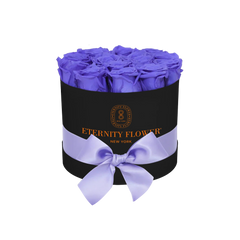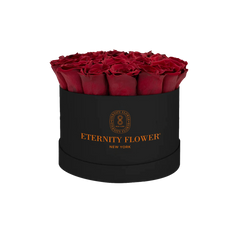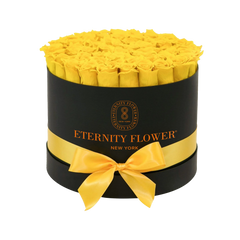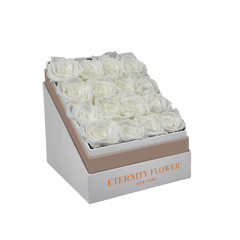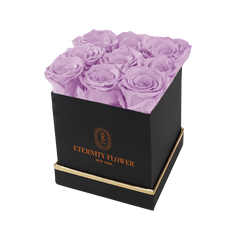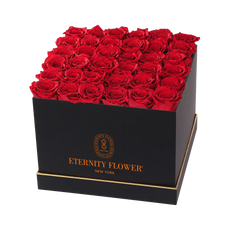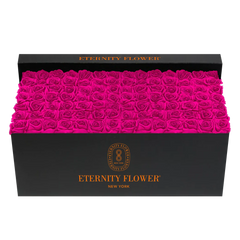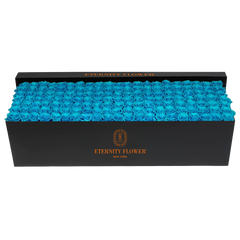Do you want a garden that grows well every year? Never-ending plants are the answer! This collection shows off 25 beautiful flowers that come back every year. These beautiful plants need little care and come in a wide range of colors, shapes, and sizes to match any garden style. Are you ready for low-maintenance flowers to change the look of your garden? Check out our full list of 25 perennial superstars to find your favorites.
1. Creeping Thyme

Creeping Thyme is a perennial ground cover known for its aromatic leaves and small, dense, purple flowers that bloom in the summer. It's an excellent choice for gardeners looking for a low-maintenance plant that can fill in walkways or cover bare spots in the garden. Its ability to withstand foot traffic makes it a favorite for creating fragrant, living pathways or filling spaces between stepping stones. Creeping Thyme also attracts pollinators with its nectar-rich blooms, adding life and color to the garden setting.
Flower Facts:
- Creeping Thyme can spread rapidly, covering large areas with its dense foliage.
- It is drought-tolerant once established, requiring minimal watering.
- This plant thrives in full sun but can tolerate partial shade.
- Its leaves are fragrant, releasing a pleasant aroma when brushed or stepped on.
- Creeping Thyme acts as an excellent ground cover, reducing weed growth and soil erosion.
How to Grow:
- Soil and Site: Plant in well-drained soil in a sunny location. It prefers slightly alkaline to neutral soil pH.
- Watering: Water regularly after planting until plants are established. Mature Thyme is drought-tolerant and needs only occasional watering.
- Pruning: Light pruning helps maintain its shape and encourages denser growth. Trim after the flowering season to keep it compact.
- Propagation: Easily propagated by division or cuttings in the spring or fall.
2. Black-eyed Susan

Black-eyed Susan, with its bright yellow petals and dark, domed centers, is a cheerful perennial that brings a splash of sunshine to any garden. This wildflower native to North America blooms from late summer into the fall, providing late-season color when many other plants have finished flowering. It's highly adaptable, thriving in a variety of conditions, and attracts butterflies and birds, adding more than just beauty to your garden.
Flower Facts:
- Black-eyed Susans are known for their resilience and can thrive in poor soil.
- They can grow up to 3 feet tall, making them a good choice for the back of a garden bed.
- These flowers are excellent for cut arrangements and will bring your garden inside your home.
- They require minimal care once established, making them ideal for beginner gardeners.
- Attracting bees, butterflies, and birds, they play a crucial role in the local ecosystem.
How to Grow:
- Soil and Site: Prefers full sun but can tolerate partial shade. It is not picky about soil type but performs best in well-drained soil.
- Watering: Water regularly until established. Once mature, Black-eyed Susan is quite drought-tolerant.
- Maintenance: Deadheading the spent flowers can encourage reblooming and prevent excessive self-seeding.
- Winter Care: Leave the stems in place over the winter to provide food for birds and protect the plant.
3. Coral Bells

Coral Bells are celebrated for their vibrant foliage and delicate bell-shaped flowers. They are a versatile perennial that can provide year-round color in the garden with their leaves that come in shades of green, silver, red, and purple. The tiny flowers bloom on slender stalks that rise above the foliage in late spring to early summer, attracting hummingbirds and butterflies. Coral Bells are excellent for adding color and texture to shaded areas of the garden.
Flower Facts:
- Coral Bells prefer partial to full shade, making them perfect for woodland gardens.
- The plant is known for its low maintenance and minimal pest problems.
- Its foliage varies widely in color and pattern, offering numerous options for garden design.
- Coral Bells are frost-resistant, making them a durable choice for colder climates.
- They can be used in containers, borders, and as ground cover.
How to Grow:
- Soil and Site: Plant in well-drained, rich soil. They prefer shady to partly shady locations.
- Watering: Keep the soil consistently moist, especially in hotter, dryer climates.
- Mulching: Apply a layer of mulch to help retain soil moisture and keep the roots cool.
- Division: Every 3-4 years, divide the plants in spring or fall to maintain vigor and plant health.
4. Yarrow

Yarrow is a hardy perennial known for its feathery foliage and dense clusters of small, flat-topped flowers that come in a spectrum of colors from white to pink, red, and yellow. Blooming from early summer to fall, Yarrow is a resilient plant that can withstand drought, heat, and poor soil, making it a popular choice for sustainable and low-maintenance gardens. Its long-lasting flowers are excellent for cutting and drying, and the plant is reputed for its herbal properties as well as its ability to attract beneficial insects to the garden.
Flower Facts:
- Yarrow's botanical name, Achillea millefolium, refers to the ancient Greek hero Achilles who supposedly used it to treat his soldiers' wounds.
- It can spread easily and become invasive in conducive conditions, thanks to its rhizomatous growth.
- Yarrow is excellent for attracting pollinators such as bees and butterflies.
- Its leaves and flowers are aromatic, and it has been used in traditional medicine for centuries.
- Yarrow is considered a companion plant, improving the health of plants growing nearby.
How to Grow:
- Soil and Site: Plant in well-drained soil in full sun. Yarrow is tolerant of poor soil conditions.
- Watering: Water regularly to establish plants. Mature Yarrow is extremely drought-tolerant and requires minimal watering.
- Pruning: Deadhead spent blooms to encourage more flowers. Cutting back in late fall or early spring promotes healthy growth.
- Division: Divide clumps every few years in spring or fall to rejuvenate and prevent overcrowding.
5. Daylily

Daylilies are beloved perennials in many gardens, celebrated for their vibrant blooms and ease of care. Each flower lasts just a day, but these plants are prolific bloomers, ensuring a continuous display of color from early summer into fall. Daylilies come in a wide range of colors and sizes, making them versatile for any garden setting. They're tough, adaptable plants that can handle various soil conditions, drought, and even coastal environments.
Flower Facts:
- Despite their name, daylilies are not true lilies and belong to the genus Hemerocallis.
- There are thousands of cultivars available, offering a vast array of colors, sizes, and bloom types.
- Daylilies can thrive in a variety of lighting conditions, from full sun to partial shade.
- They have edible parts, and their buds and flowers are used in culinary dishes in some cultures.
- Daylilies are resistant to pests and diseases, making them an excellent choice for a low-maintenance garden.
How to Grow:
- Soil and Site: Plant in moderately fertile, well-drained soil in full sun or partial shade.
- Watering: Water deeply and regularly during their first growing season. Once established, daylilies are quite drought-tolerant.
- Mulching: Apply mulch to conserve moisture, reduce weeds, and keep the roots cool.
- Division: Every 3-5 years, divide the plants in early spring or late summer to maintain vigor.
Read More: 5 Simple Steps to Create Large Flower Arrangements with Tips and Tricks
6. Cranesbill

Cranesbill, or hardy geraniums, are charming perennial plants known for their delicate, often veined flowers and deeply cut foliage. They bloom profusely from late spring to early fall, offering shades of pink, purple, blue, and white. Cranesbill is incredibly versatile, suitable for borders, ground cover, or rock gardens. They're easy to care for, attract pollinators, and many varieties offer autumn foliage color, making them a garden favorite for year-round interest.
Flower Facts:
- The common name "Cranesbill" derives from the shape of the plant's seed capsule, resembling the bill of a crane.
- Hardy geraniums are not to be confused with the annual geraniums (Pelargonium) commonly seen in summer containers.
- They are known for their ability to perform well in both sunny and shaded areas.
- Cranesbill varieties range in size from compact, ground-hugging plants to those that can reach up to two feet in height.
- They are excellent for attracting bees and other pollinators to the garden.
How to Grow:
- Soil and Site: Plant in well-drained soil enriched with organic matter. Most varieties prefer full sun to partial shade.
- Watering: Water regularly to keep the soil moist, especially during dry spells. Cranesbill is relatively drought-tolerant once established.
- Pruning: After the first flush of bloom, cut back the plant to encourage a second bloom and refresh the foliage.
- Division: Divide the plants every 3-5 years in spring or fall to promote vigorous growth and maintain the health of the clump.
7. Salvia

Salvia, also known as sage, is a diverse genus of perennial, biennial, and annual plants cherished for their spiky blooms and aromatic foliage. Salvia varieties display a wide range of colors including blue, red, pink, purple, and white. They are celebrated for their long blooming period, from late spring through fall, and their ability to attract pollinators such as bees, butterflies, and hummingbirds. Salvias are drought-tolerant once established, making them ideal for water-wise gardens.
Flower Facts:
- The name "Salvia" comes from the Latin word salvare, meaning "to save," referring to the herb's healing properties.
- Salvias are known for their medicinal and culinary uses, especially common sage (Salvia officinalis).
- They can vary greatly in size, from compact varieties that are perfect for borders to tall species that make striking background plants.
- Salvias prefer full sun but some varieties can tolerate partial shade.
- They are resistant to deer and rabbits, making them a good choice for gardens in areas with these animals.
How to Grow:
- Soil and Site: Plant in well-drained soil in a location that receives full sun. Some varieties can tolerate light shade.
- Watering: Water regularly until established. Salvias are drought-tolerant and require less water once mature.
- Pruning: Deadhead spent flowers to encourage continued blooming. Prune back in late winter or early spring to promote bushy growth.
- Propagation: Many varieties can be easily propagated from cuttings or division in spring or fall.
8. Coneflower

Coneflower, known scientifically as Echinacea, is a hardy perennial native to North America. It's famed for its large, daisy-like flowers with raised centers that range in color from the traditional purple to pink, red, yellow, and orange. Coneflowers bloom from early summer to fall, adding vibrant colors and height to the garden. They're not only beautiful but also attract bees and butterflies, making them an excellent choice for pollinator gardens.
Flower Facts:
- Coneflowers are widely recognized for their immune-boosting properties and are used in traditional medicine.
- They prefer full sun but can tolerate partial shade, especially in hotter climates.
- Coneflowers are drought-tolerant once established, making them suitable for xeriscaping.
- Their seeds provide food for birds in the winter, especially goldfinches.
- Echinacea plants are easy to care for, requiring minimal maintenance once established.
How to Grow:
- Soil and Site: Plant in well-drained soil in an area that receives full sun.
- Watering: Water regularly during the first growing season. Once established, coneflowers are quite drought-tolerant.
- Mulching: Apply mulch to help retain soil moisture and suppress weeds.
- Division: Divide coneflowers every few years in spring or fall to rejuvenate them and promote vigorous growth.
9. Chrysanthemum

Chrysanthemums, often simply called "mums," are popular perennials that provide a spectacular finale to the growing season with their profusion of flowers in the fall. Available in a dizzying array of colors, sizes, and flower forms, mums are versatile plants that can be used in borders, containers, and as cut flowers. They're celebrated for their ability to bloom prolifically even as the days shorten, making them invaluable for extending the garden's color display into late autumn.
Flower Facts:
- Chrysanthemums are native to Asia and northeastern Europe, with centuries of cultivation history, especially in China and Japan.
- They symbolize friendship, happiness, and well-being in various cultures.
- Mums require a specific photoperiod to bloom, needing longer nights to initiate flowering.
- They come in several forms, including pompon, daisy-like, and spider mums.
- Chrysanthemums are excellent for attracting butterflies to the garden.
How to Grow:
- Soil and Site: Plant in well-drained soil rich in organic matter. They thrive in full sun but can tolerate partial shade.
- Watering: Keep the soil consistently moist but not waterlogged. Regular watering is crucial for newly planted mums.
- Pinching: Pinch back the tips of the stems in early summer to encourage bushier growth and more blooms.
- Winter Care: In colder climates, mulch heavily around the plants after the ground freezes to protect them from winter damage.
10. Hellebore

Hellebores, also known as Christmas or Lenten roses, grace the garden with their elegant, early blooms, often appearing while snow still blankets the ground. These perennials are treasured for their robust, nodding flowers in shades ranging from pure white to deep purples and almost black. Hellebores are remarkably shade-tolerant and deer-resistant, making them perfect for understory plantings and woodland gardens.
Flower Facts:
- Hellebores can bloom in the late winter or early spring, often when snow is present.
- They prefer shaded or semi-shaded areas, thriving under tree canopies.
- Hellebore flowers come in a variety of colors and forms, including single, double, and speckled patterns.
- The plants are highly resistant to deer and rabbits due to their toxicity.
- Hellebores are perennials that can live for several decades in the right conditions.
How to Grow:
- Soil and Site: Plant in well-drained, fertile soil that is rich in organic matter. A shady to partially shady location is ideal.
- Watering: Ensure consistent moisture, especially during dry spells in summer and autumn.
- Maintenance: Remove older leaves in late winter to make room for new growth and flowers.
- Propagation: Propagate by division after flowering or by seed, though seed-grown plants may take a few years to flower.
11. Aster

Asters bring a splash of color to the autumn garden with their daisy-like flowers in shades of blue, purple, pink, and white. These hardy perennials are indispensable for late-season blooms, offering vital support to bees and butterflies preparing for winter. Asters come in a range of sizes, from compact varieties perfect for borders to taller species that add depth and color to the back of a garden. Their ease of care and vibrant colors make them a favorite among gardeners looking to extend the blooming season.
Flower Facts:
- Asters are one of the last perennials to bloom, providing color from late summer into fall.
- They are a key nectar source for pollinators, especially migrating butterflies.
- Asters come in various species and hybrids, with heights ranging from 8 inches to 8 feet.
- The name "Aster" is derived from the Greek word for "star," reflecting the shape of the flower.
- Asters can be prone to powdery mildew; good air circulation and proper spacing can help prevent this.
How to Grow:
- Soil and Site: Prefer well-drained, loamy soil in a sunny location, though they can tolerate partial shade.
- Watering: Keep soil consistently moist but not waterlogged. Asters are moderately drought-tolerant once established.
- Pruning: Pinch back growth in early summer to encourage bushier plants and more blooms.
- Division: Divide every 2-3 years in the spring to maintain vigor and prevent overcrowding.
12. Lady’s Mantle

Lady's Mantle, with its soft, scalloped green leaves that beautifully capture dewdrops, is a charming addition to any garden. This perennial forms a low mound of foliage that is almost as attractive as its clusters of tiny, star-shaped yellow-green flowers appearing in early summer. Lady's Mantle is ideal for edging, as ground cover, or in mixed borders, providing a graceful transition between plants.
Flower Facts:
- The leaves of Lady's Mantle are known for their superhydrophobic property, which makes water bead up into sparkling droplets.
- It prefers cooler climates and can suffer in hot, dry conditions.
- Lady's Mantle can spread easily, filling in garden spaces with its attractive foliage.
- The plant is often used in herbal medicine for its astringent properties.
- It makes a wonderful filler in floral arrangements, lasting well when cut.
How to Grow:
- Soil and Site: Thrives in well-drained soil enriched with organic matter, in full sun to partial shade.
- Watering: Water regularly to keep the soil evenly moist, especially in the first growing season after planting.
- Mulching: Apply a layer of organic mulch around the base of the plants to retain moisture and suppress weeds.
- Maintenance: Deadheading after flowering can prevent excessive self-seeding and promote a second flush of leaves.
13. Columbine

Columbine (Aquilegia) is a gracefully elegant perennial known for its unique, nodding flowers with distinctive spurs that project backward, making it a standout in any garden. These flowers come in a wide range of colors, including blue, purple, red, yellow, and white, often with multicolored blooms. Columbines are particularly valued for their ability to attract hummingbirds and beneficial insects. They prefer cooler climates and can be found blooming in late spring to early summer, adding a touch of whimsy to shade gardens, woodland plantings, and cottage gardens.
Flower Facts:
- The genus name, Aquilegia, is derived from the Latin word for eagle (aquila), referring to the talon-like spurs of the flowers.
- Columbine is native to many parts of the world, including North America, Europe, and Asia, with a wide variety of species.
- The plant is known for self-seeding prolifically, often creating delightful natural hybrids in the garden.
- Columbine leaves are a beautiful, soft green and are often fan-shaped, adding to the plant's ornamental value.
- While the flowers are the main attraction, the foliage also adds texture and interest, especially before and after bloom.
How to Grow:
- Soil and Site: Prefers moderately fertile, well-drained soil in full sun to partial shade. It thrives in cooler, moist conditions.
- Watering: Keep the soil consistently moist but not waterlogged. Columbine does not like to dry out.
- Maintenance: Deadheading can prolong blooming and prevent excessive self-seeding, although leaving some seed heads can encourage natural propagation.
- Division: While not necessary for the health of the plant, columbines can be divided every few years to spread their beauty to other parts of the garden.
14. Siberian Iris

Siberian Iris (Iris sibirica) is a striking perennial known for its elegant, grass-like foliage and beautifully refined flowers, which appear in late spring to early summer. The flowers range in color from deep purples and blues to whites and yellows, held aloft on slender, strong stems that do not require staking. This iris variety is appreciated for its ease of care, resistance to pests and diseases, and ability to thrive in a range of garden settings, including waterside plantings, borders, and naturalized areas.
Flower Facts:
- Siberian Iris has a more delicate appearance than other iris varieties but is tough and hardy.
- The plant forms clumps that can be divided to propagate and spread the iris throughout the garden.
- It is known for its drought tolerance once established, making it a low-maintenance option for many gardens.
- The foliage remains attractive even after the blooms have faded, providing structural interest into the fall.
- Siberian Iris does not suffer from the common iris borer pest that affects bearded iris varieties.
How to Grow:
- Soil and Site: Prefers well-drained, rich soil in full sun to partial shade. Can tolerate wet conditions, making it suitable for pond edges or rain gardens.
- Watering: Water regularly to keep the soil moist, especially during the bloom period and the first year after planting.
- Maintenance: Minimal maintenance is required. Remove old foliage in early spring and deadhead spent flowers to keep the plant looking tidy.
- Division: Clumps can become crowded after several years. Divide in late summer to encourage vigorous blooming in the following seasons.
15. Catmint

Catmint (Nepeta) is a beloved perennial herb known for its aromatic, gray-green foliage and soft, lavender-blue flowers. It blooms profusely from late spring into the summer, and when sheared back after the initial flush of flowers, it can bloom again in the fall. Catmint is drought-tolerant, easy to care for, and attracts bees and butterflies, making it a valuable addition to any sunny garden border, herb garden, or as a ground cover. Despite its name, it is more attractive to bees than to cats, unlike its close relative, catnip.
Flower Facts:
- Catmint is highly regarded for its ability to thrive in hot, dry conditions, making it perfect for water-wise gardens.
- The plant has a sprawling habit, with stems that can spread outwards, creating a full, bushy appearance.
- It's often used as a low-maintenance, aromatic edging plant in landscapes.
- Catmint can help repel certain pests from the garden, thanks to its strong scent.
- The flowers and leaves are edible and can be used to make a calming tea.
How to Grow:
- Soil and Site: Thrives in well-drained soil and full sun, although it can tolerate light shade.
- Watering: Water regularly during the first growing season to establish a deep, extensive root system. Once established, catmint is quite drought-tolerant.
- Pruning: Shear back the plant by a third after the first bloom to encourage a second flush of flowers.
- Division: Divide the plants every few years in the spring or fall to maintain vigor and prevent overcrowding.
16. Thrift

Thrift, also known as sea pink or Armeria maritima, is a charming, compact perennial that forms tight, evergreen clumps of grass-like foliage, from which emerge tall, slender stems topped with globular clusters of pink, white, or red flowers. Thriving in rocky, coastal environments, thrift is exceptionally tolerant of poor soil and salt spray, making it a perfect choice for seaside gardens, rockeries, or edging paths. Its blooming season in late spring to early summer brings vibrant color and texture to the garden.
Flower Facts:
- Thrift is native to coastal areas, making it well-suited to similar harsh growing conditions.
- Its globular flower heads are attractive to butterflies and bees.
- The plant is low-growing, rarely exceeding 12 inches in height, which makes it an excellent ground cover or border plant.
- Thrift prefers well-drained soil and is particularly tolerant of sandy and salty conditions.
- The foliage remains green and neat throughout the year, providing lasting visual interest.
How to Grow:
- Soil and Site: Plant in well-drained, sandy soil in full sun. Thrift can tolerate a wide pH range.
- Watering: Water regularly to establish plants. Once established, thrift is very drought-tolerant and requires minimal watering.
- Maintenance: Deadhead spent flowers to encourage a second bloom. Trim back the foliage in early spring to keep the plant compact and neat.
- Propagation: Propagate by division in spring or by seed. Clumps can become woody after several years and should be rejuvenated or replaced.
Read More: What is Morning Glory Flower Meaning? Origins and Colorful Secrets!
17. Hummingbird Mint

Hummingbird Mint, or Agastache, is a perennial herb known for its aromatic foliage and spires of tubular flowers that come in shades of pink, orange, purple, and blue. As the name suggests, it is highly attractive to hummingbirds, as well as bees and butterflies, making it an excellent choice for pollinator gardens. Its long blooming period, from mid-summer to fall, provides vibrant color and life to the garden when many other plants are starting to fade.
Flower Facts:
- Agastache has a minty or licorice scent when the leaves are crushed, which can deter deer and rabbits.
- It prefers hot, sunny locations and is tolerant of drought once established, making it a good choice for xeriscaping.
- The plant's flowers are edible and can be used to add color and flavor to salads or as garnishes.
- Hummingbird Mint comes in various species and hybrids, each with its own unique flower color and plant size.
- Its upright growth habit and spiky flower heads add architectural interest to borders and beds.
How to Grow:
- Soil and Site: Prefers well-drained soil and a full sun location to thrive. Avoid wet, heavy soils.
- Watering: Water regularly until established. Agastache is drought-tolerant and does not like soggy roots.
- Maintenance: Deadhead to encourage continuous blooming throughout the season. Cut back in early spring to promote vigorous new growth.
- Propagation: Can be propagated by seed or division. Some varieties also root easily from stem cuttings.
18. Allium

Alliums are striking ornamental onions, known for their showy, spherical flower heads that appear in late spring to early summer, floating above the garden on tall stems. Their flowers range in color from purple and blue to white and pink, depending on the variety. Alliums are loved by gardeners for their dramatic globular blooms, which are excellent for adding height and interest to borders and beds, and their seed heads provide architectural interest well into winter.
Flower Facts:
- Alliums are available in a wide range of sizes, from petite varieties suitable for the front of a border to towering types that can reach several feet in height.
- The flowers are attractive to bees and butterflies, making them a valuable addition to pollinator-friendly gardens.
- After blooming, the dried flower heads can be left on the plant to add winter interest to the garden or can be cut for indoor arrangements.
- Alliums are resistant to deer and rabbits, thanks to their onion scent.
- They are generally easy to grow and require minimal maintenance once established.
How to Grow:
- Soil and Site: Plant bulbs in well-drained soil in a sunny location. They perform best in locations where they receive full sun for the majority of the day.
- Watering: Water bulbs after planting and during dry spells in the spring. Once established, alliums are quite drought-tolerant.
- Maintenance: Allow the foliage to die back naturally after blooming to ensure the bulbs store energy for the next year's growth.
- Planting Depth and Spacing: Plant bulbs at a depth of about three times their diameter and space them about 8-12 inches apart, depending on their size
19. Roman Chamomile

Roman Chamomile is a low-growing perennial herb famed for its apple-scented foliage and daisy-like flowers with white petals circling a yellow disk. This plant forms a dense, mat-like ground cover, blooming throughout the summer. It's often used in herb gardens, as a lawn substitute, or to create aromatic, chamomile-scented pathways. In addition to its ornamental uses, Roman Chamomile is renowned for its calming, medicinal properties, often brewed into a soothing tea.
Flower Facts:
- Roman Chamomile is more tolerant of foot traffic and being mowed than its counterpart, German Chamomile.
- Its flowers and leaves are used in making tea known for its calming effects.
- The plant prefers well-drained soil and full to partial sun exposure.
- It is drought-resistant once established, making it a low-maintenance option for gardens.
- Roman Chamomile can attract beneficial insects, including pollinators like bees.
How to Grow:
- Soil and Site: Plant in well-drained soil with full to partial sun exposure.
- Watering: Water regularly until established; afterward, it becomes quite drought-tolerant.
- Maintenance: Can be trimmed back to maintain a tidy appearance or control spreading.
- Propagation: Propagate by division or seed. It can self-seed under optimal conditions.
20. Balloon Flower

Balloon Flower is named for its unique bud shape, which swells like a balloon before bursting open into star-shaped, blue, white, or pink flowers in summer. This perennial is appreciated for its long blooming period and low maintenance needs, making it a staple in borders, rock gardens, and cottage gardens. The plant's foliage is also attractive, with lance-shaped leaves that provide a lush backdrop for the vivid blooms.
Flower Facts:
- The roots of Balloon Flower have been used in traditional Asian medicine.
- Once the balloon-like buds open, they reveal bell-shaped flowers that can be up to three inches across.
- Balloon Flower prefers a sunny spot but can tolerate partial shade.
- It's known for being rabbit-resistant, making it a great choice for gardens troubled by these pests.
- The plant is a late bloomer, with foliage emerging in late spring and flowers not appearing until summer.
How to Grow:
- Soil and Site: Plant in well-drained soil in a location that receives full sun to partial shade.
- Watering: Keep the soil evenly moist, especially during the blooming period.
- Maintenance: Deadheading will encourage more blooms. The plant is slow to emerge in spring, so mark its location to avoid accidental disturbance.
- Propagation: While it can be grown from seed, Balloon Flower is best propagated by division in spring or fall, taking care not to damage the deep taproot.
21. Lavender

Lavender, with its fragrant purple spikes and silvery-green foliage, is a perennial favorite in gardens worldwide. This Mediterranean native thrives in sunny, dry conditions, making it perfect for creating aromatic borders, herb gardens, or as a striking container plant. Lavender's flowers are not only beautiful but also attract a host of pollinators, while its harvested blooms can be used in sachets, cooking, and essential oils.
Flower Facts:
- Lavender is a drought-tolerant plant, once established, requiring minimal water.
- Its essential oils are prized for their calming and antiseptic properties.
- Lavender prefers hot, sunny locations and well-drained soil.
- There are several species of Lavender, each with slightly different growth habits and floral characteristics.
- The plant's gray-green foliage is evergreen in most climates, providing year-round interest.
How to Grow:
- Soil and Site: Plant in well-drained, sandy soil in full sun. Lavender does not thrive in damp, heavy soils.
- Watering: Water plants deeply but infrequently, allowing the soil to dry out between waterings.
- Maintenance: Prune early in the spring to encourage branching and prevent the center from becoming woody.
- Propagation: Lavender can be propagated from cuttings or by dividing older plants.
22. Penstemon

Penstemon, often called beardtongue, is a versatile perennial known for its tubular flowers, which come in shades of pink, red, purple, and white. Thriving in full sun, Penstemons are beloved by gardeners for their long flowering period from late spring to early summer. Penstemons vary in size and habit, making them suitable for a wide range of garden settings, from borders to rock gardens.
Flower Facts:
- Penstemon flowers have a unique fifth stamen that looks like an open mouth with a hairy tongue, hence the name "beardtongue."
- They are native to North America, with a high concentration of species in the western United States.
- Penstemons prefer well-drained soil and are tolerant of dry, rocky sites.
- The plants are relatively drought-tolerant once established, making them suitable for xeriscaping.
- Deadheading spent blooms can encourage a longer flowering period.
How to Grow:
- Soil and Site: Plant in well-drained soil in a location that receives full sun.
- Watering: Water regularly until established. Mature plants are drought-tolerant.
- Maintenance: Apply a light mulch around the base to help retain moisture and reduce weed competition. Avoid heavy mulching over the crown of the plant.
- Propagation: Propagate by seed or by taking stem cuttings. Some species can also be divided in spring or fall.
23. Lamium

Lamium, or dead nettle, is a shade-tolerant perennial ground cover known for its silver or variegated leaves and clusters of pink, purple, or white flowers. Blooming from spring to summer, Lamium is an excellent choice for brightening up shady areas under trees or shrubs, in woodland gardens, or as an underplanting in perennial beds. Its foliage provides visual interest even when the plant is not in bloom, and it is particularly valued for its ability to grow in less-than-ideal soil conditions.
Flower Facts:
- Lamium is named dead nettle because its leaves resemble those of stinging nettles but without the sting.
- It spreads quickly, covering large areas with a dense mat of foliage.
- Lamium is deer and rabbit resistant, making it a good choice for gardens plagued by these visitors.
- The plant is low maintenance and can help suppress weeds in shady garden spots.
- Its variegated foliage can brighten up dark areas in the landscape.
How to Grow:
- Soil and Site: Prefers moist, well-drained soil in partial to full shade.
- Watering: Keep the soil consistently moist, especially in hotter, drier climates.
- Maintenance: Trim back after the first flush of flowers to promote bushiness and a second bloom.
- Propagation: Easily propagated by division in spring or fall or by stem cuttings.
24. Sedum

Sedum, also known as stonecrop, is a succulent perennial that comes in a wide array of sizes, colors, and forms. Known for their drought tolerance and easy care, sedums are excellent for rock gardens, green roofs, ground covers, and borders. Their fleshy leaves vary in color from green to red, purple, and even gold, adding year-round interest. In late summer to fall, sedums produce clusters of star-shaped flowers that attract bees and butterflies.
Flower Facts:
- Sedum species range from low-growing ground covers to taller, upright varieties.
- They are extremely drought-tolerant, making them perfect for xeriscaping or areas with dry soil.
- Sedums store water in their leaves, which helps them withstand dry conditions.
- The flowers are highly attractive to pollinators, especially late in the season when other blooms may be scarce.
- Some sedums change color in the fall, adding seasonal interest to the garden.
How to Grow:
- Soil and Site: Plant in well-drained soil in a location that receives full sun. Some varieties can tolerate partial shade.
- Watering: Water sparingly; sedums do not like wet feet and are very drought-tolerant once established.
- Maintenance: Low maintenance. Deadhead spent flowers to keep plants looking tidy and to encourage a second flush of blooms in some species.
- Propagation: Easily propagated by leaf or stem cuttings or by dividing clumps in spring or fall.
Read More: What is The Ugliest Zodiac Sign? 7 ‘Ugliest’ Zodiac Sign in The World
25. Coreopsis

Coreopsis, often referred to as tickseed, is a vibrant and cheerful perennial known for its daisy-like flowers. These blooms, ranging in color from sunny yellow to deep gold and sometimes red or bicolor, appear atop slender stems from early summer to fall. Coreopsis is prized for its ability to thrive in poor soil, its drought tolerance once established, and its lengthy blooming period.
Flower Facts:
- Coreopsis is the state wildflower of Florida.
- It requires full sun to bloom profusely and performs best in well-drained soil.
- The plant is known for its easy care and minimal pest or disease issues.
- Coreopsis varieties range from low-growing, compact types to taller species that can reach over 2 feet in height.
- Deadheading spent blooms can encourage continuous flowering throughout the season.
How to Grow:
- Soil and Site: Plant in well-drained soil in a location that receives full sun.
- Watering: Water regularly until established. Mature plants are quite drought-tolerant.
- Maintenance: Minimal. Consider deadheading to promote more blooms and prevent excessive self-seeding.
- Propagation: Propagate by seed, division, or basal cuttings in spring or early summer.
Keep Your Garden Blooming Year-Round!
These 25 perennial flowers aren't just a splash of color – they're a garden investment! With minimal effort, you'll be rewarded with beautiful blooms season after season. Imagine the joy of watching your favorite flowers that come back every year, a familiar and delightful surprise. So pick your favorites, plant them with care, and enjoy the ongoing beauty they bring to your garden.






